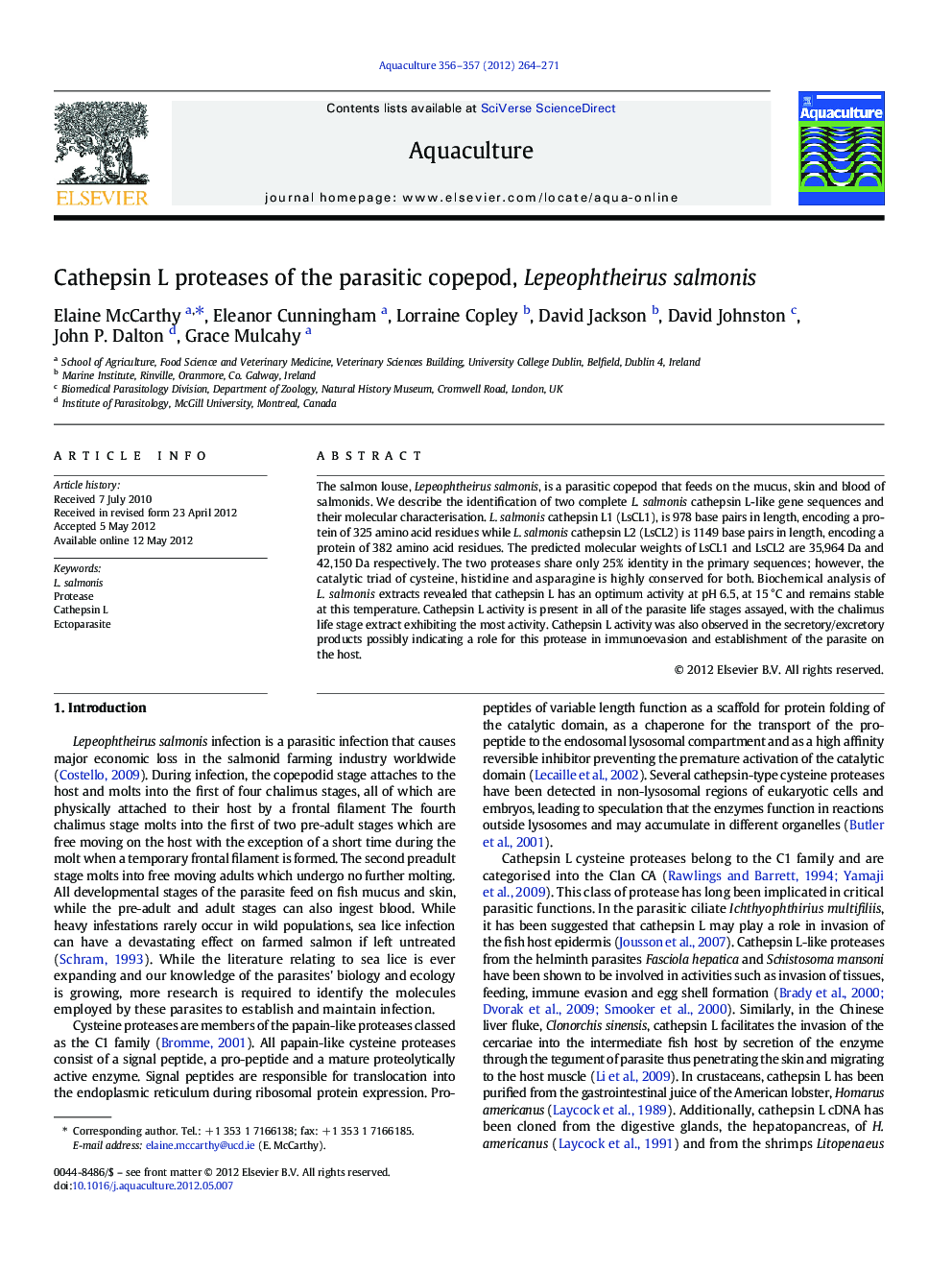| Article ID | Journal | Published Year | Pages | File Type |
|---|---|---|---|---|
| 2422574 | Aquaculture | 2012 | 8 Pages |
The salmon louse, Lepeophtheirus salmonis, is a parasitic copepod that feeds on the mucus, skin and blood of salmonids. We describe the identification of two complete L. salmonis cathepsin L-like gene sequences and their molecular characterisation. L. salmonis cathepsin L1 (LsCL1), is 978 base pairs in length, encoding a protein of 325 amino acid residues while L. salmonis cathepsin L2 (LsCL2) is 1149 base pairs in length, encoding a protein of 382 amino acid residues. The predicted molecular weights of LsCL1 and LsCL2 are 35,964 Da and 42,150 Da respectively. The two proteases share only 25% identity in the primary sequences; however, the catalytic triad of cysteine, histidine and asparagine is highly conserved for both. Biochemical analysis of L. salmonis extracts revealed that cathepsin L has an optimum activity at pH 6.5, at 15 °C and remains stable at this temperature. Cathepsin L activity is present in all of the parasite life stages assayed, with the chalimus life stage extract exhibiting the most activity. Cathepsin L activity was also observed in the secretory/excretory products possibly indicating a role for this protease in immunoevasion and establishment of the parasite on the host.
► Molecular characterisation of two L. salmonis cathepsin L-like gene sequences. ► Identification of four potential cathepsin L homologues in the sea lice species. ► Biochemical characterisation of L. salmonis cathepsin L activity. ► Identification of L. salmonis cathepsin L activity in different parasite life stages.
